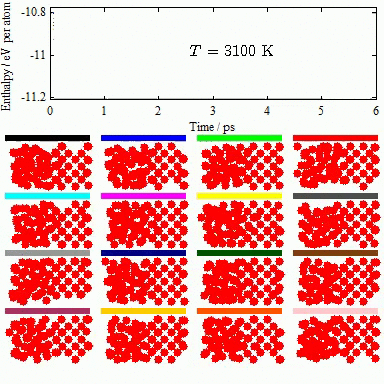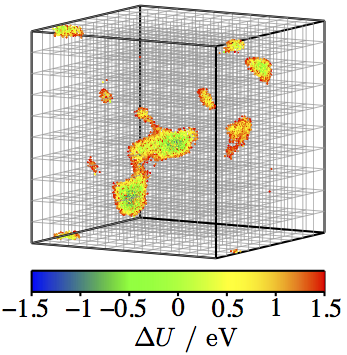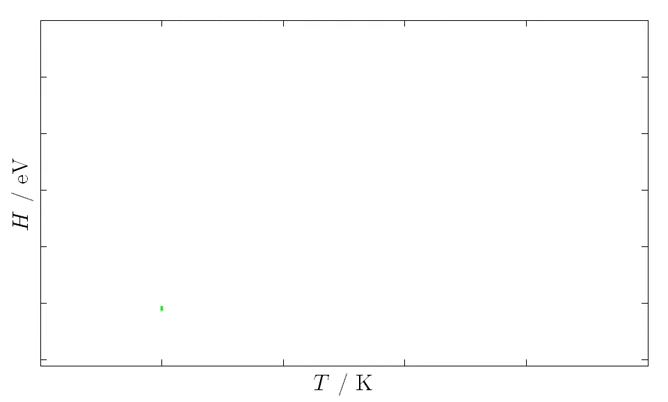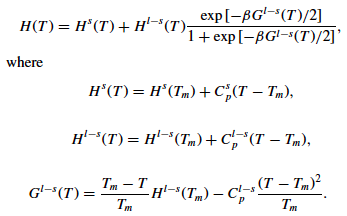Research
Research Projects
Emergent refractory behaviors in earth and extraterrestrial materials (DOD ARO MURI)

- SLUSCHI package, DFT
- High temperature crystal structure prediction
- Melting temperature
- Fusion enthalpy & entropy
- MAPP framework, deep learning
- Melting temperature
- Thermal expansion
- Thermal conductivity
Fundamental studies of hydrogen arc plasmas for high-efficiency and carbon-free steelmaking (DOE Earthshots)

- SLUSCHI package, DFT
- Diffusion coefficient
- Free energy of liquids
- Melting temperature
- MAPP framework, deep learning
- Melting temperature
- CALPHAD model parameters
Rare earth materials under extreme conditions (NSF)

- SLUSCHI package, DFT
- Reaction free energy
- Phase stability
- Diffusion coefficient
- MAPP framework, deep learning
- Melting temperature
- Volume
Small-cell Coexistence Method

This movie (~1MB) shows the evolution of 16 duplicated cells with 108 Ta atoms at 3100 K. In terms of atomic configurations, solids display periodic patterns, while liquids do not. Liquids also have higher energy/enthalpies than solids. MDs start from half-and-half coexistence. All duplicates end in pure phases (either a solid or a liquid) in 6 picoseconds.
- System size is small (around 100 atoms).
- Start from half-and-half solid-liquid coexistence.
- Coexistence is not stable. It ends in a single phase.
- MD trajectory is short.
- Run multiple MD (NPT) duplicates to evaluate the probability distribution of the solid and the liquid Nliquid/Nsolid.
- Infer the melting temperature based on the probability.
Particle Insertion Method

Chemical potential can be calculated as the free energy difference upon inserting a test particle.

